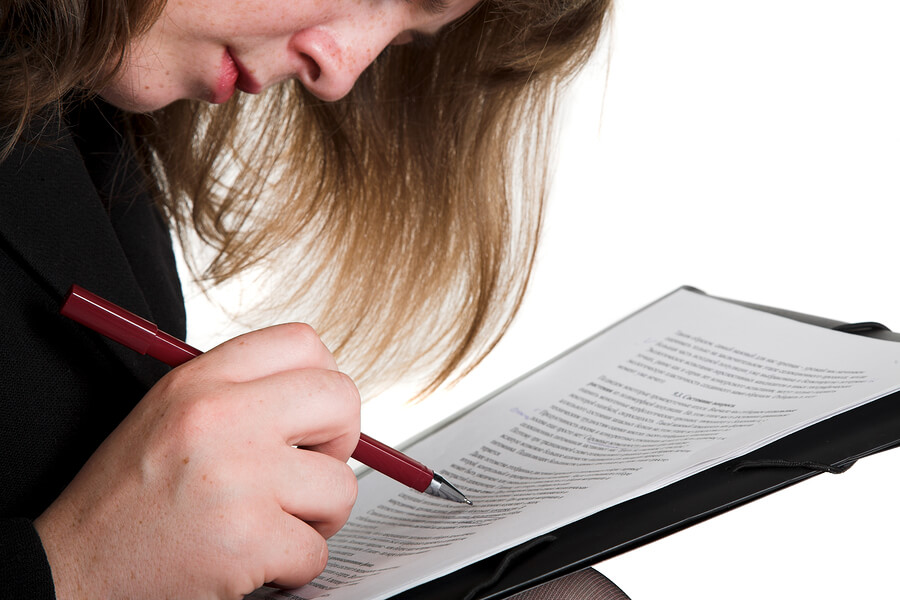Proofreading and editing skills are essential parts of producing a reliable written text, whether it happens to be a college dissertation, a promotional email to potential customers, or an article ready for publishing in a magazine. It’s vital that effective proofreading takes place first. A skilled proofreader can make a living as it’s so important that any written text shared with others is readable and free of mistakes whether it’s grammar, word usage, or verb forms. A promotional product description won’t sell a product if it’s full of mistakes or doesn’t read well. Just as a cover letter with mistakes in it won’t get a candidate for the job.
To have the proofreading skills to do a good proofread you need to follow the tips below:
1. Concentration is crucial
You aim to spot all the mistakes, so you must concentrate. This means ensuring you are free of any distractions and likely interruptions. To begin with, you should turn off your mobile phone, your radio, and your television. Don’t think you can do a successful proofread with any other distraction in your ear. This is not one of the recommended proofreading techniques for effective proofreading to take place. If you are being paid to proofread your clients will expect a good job to be done so that means having a nice quiet place to do effective proofreading.
2. Put the writing into its paper form
This is often an easier way to spot mistakes rather than using a computer screen. This makes for more effective proofreading. Of course with longer texts, this wouldn’t be practical to print off all the pages.
3. Homonyms need to be monitored
Homonyms are any words that happen to share the same pronunciation or spelling but don’t possess the same meanings. Sometimes it’s easy to get them confused such as except and accept which sound almost the same but have entirely different meanings. Other examples are pear and pair, byte and bite, site, and sight, mite and might, fair and fair tuff and tough, and male and mail. The list goes on and on so you should be aware of these confusions and if you aren’t sure consult a dictionary.
4. Be on the look-out for apostrophes and contractions
It’s so easy to get these confused, but it’s crucial with any effective proofreading that these are corrected. The commonest examples are it’s and its and you’re and your. Also possession, such as ‘the dog’s bone’, not ‘the dogs bone’. Plurals with apostrophes can sometimes be tricky too like the children’s toys or women’s clothes. Make sure you know these rules and check if you are not sure as you do the proofreading. Effective proofreading involves knowing a bit more than your client. You will be chosen for your proofreading skills if you are good at the job and recommended by clients.
5. Check punctuation carefully
It’s surprising how the wrong punctuation can affect how a text is read so this needs to be right, particularly paying attention to capitalization of words and extra or missing commas. You may sometimes be asked to check a specific style such as Harvard. To use your proofreading techniques effectively, always tell your clients which writing and referencing styles you know well. You can learn the rules yourself by using reference tools like Wikipedia which have sections on different referencing styles.
6. Read the text backwards
When writing, it’s quite usual to become blind to one’s errors, as the brain corrects automatically any wrong words in sentences. To make a break with this pattern the text should be read word by word backwards.
7. Checking numbers
Ensure all numbers are written correctly. That means getting the number of zeros right such as $100,000 instead of $10, 000. These are simply not the same so must be corrected. If a number used in a proofread assignment doesn’t sound quite right, like the population of Australia is said to be 24 billion when it’s 24 million, you can use your common sense to correct this error. You can also do a Google search to verify the details. Your client will praise your proofreading techniques if you just go that extra mile.
8. Word confusions
Some words are spelled almost the same but have entirely different meanings, such as loose and loose. These are often written incorrectly. Also, the use of definite and indefinite articles are often used incorrectly or even missed out altogether. These are ‘a,’ ‘an’ and ‘the.’ If you have a text to proofread, written by a second-language speaker, pay particular attention to the use of definite and indefinite articles. You will be thanked for correcting this sort of common error.
9. Get a second proofreader to check the text
To try and find if your proofreading skills and proofreading techniques are any good get somebody else to check your work. If you have missed some errors you will have to concentrate more the next proofread you do.
If you follow the tips above you will find your proofreading techniques will be much improved and you will attract clients from far and wide.




